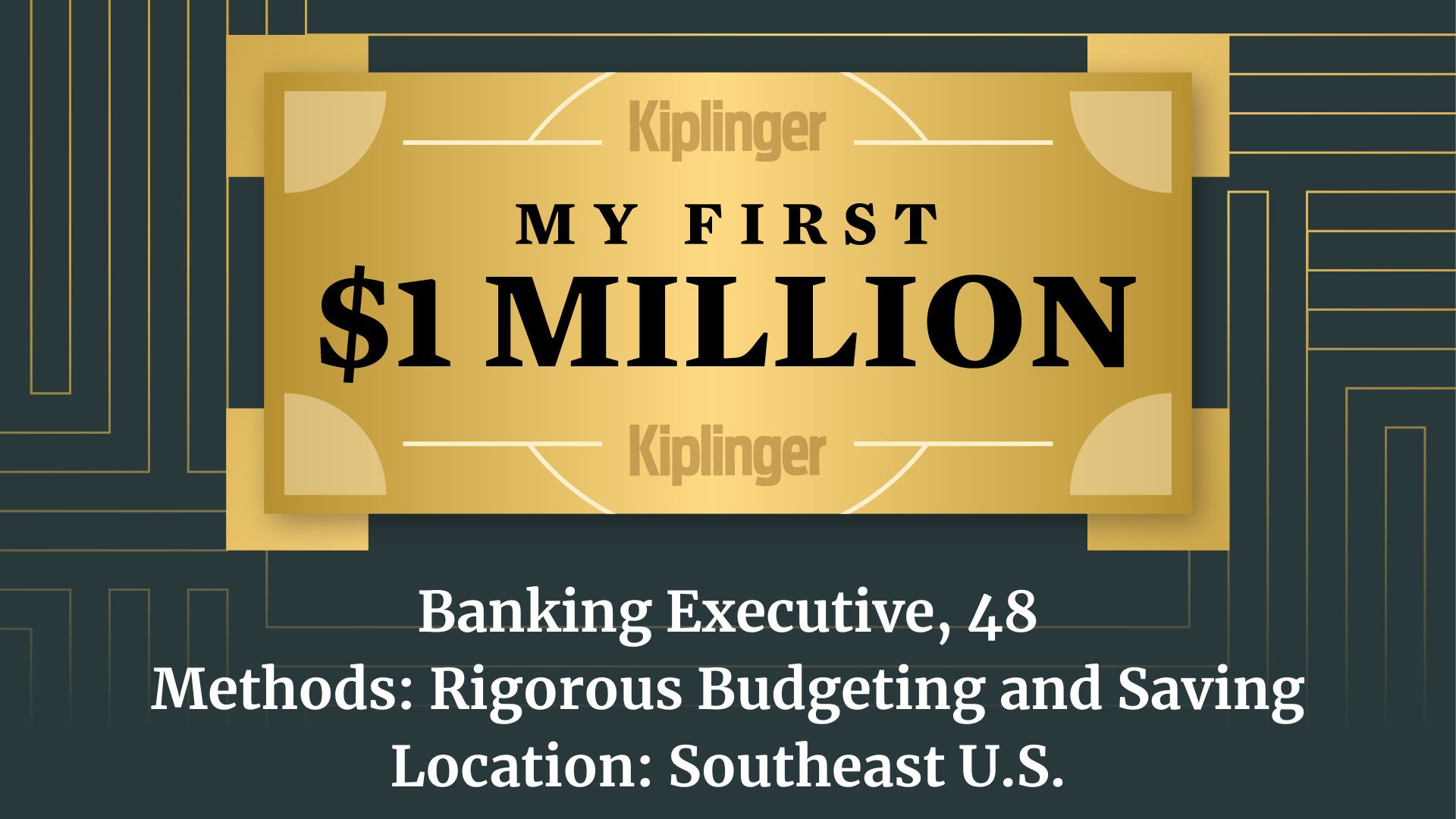Pay Now or Pay Later: Reducing Taxes Should Be a Retirement Priority
Retirement planning isn't just about saving enough money to last a lifetime. It's about keeping as much of your nest egg as possible through prudent tax-management strategies.


Do you have a plan to help reduce income taxes in retirement?
That’s become one of my top questions for the pre-retirees who attend my financial planning classes or come to my office for help.
If they have to think about it, it means they likely don’t have a plan. And, unfortunately, that could cost them a lot of money down the road.
From just $107.88 $24.99 for Kiplinger Personal Finance
Become a smarter, better informed investor. Subscribe from just $107.88 $24.99, plus get up to 4 Special Issues

Sign up for Kiplinger’s Free Newsletters
Profit and prosper with the best of expert advice on investing, taxes, retirement, personal finance and more - straight to your e-mail.
Profit and prosper with the best of expert advice - straight to your e-mail.
Financial professionals have been putting more emphasis on tax-efficient planning in recent years because the amount of money being saved in IRAs, 401(k)s and other qualified benefit plans has become so excessive. When we evaluate where people — baby boomers, especially — are putting their savings, we find people are retiring with almost all their assets in tax-deferred accounts. And it’s becoming problematic.
That’s because too many savers are finding out in retirement that they have been misinformed.
They’ve been pushed to put their money into 401(k)s and IRAs — and grow their nest egg there — under the premise that when they get to retirement and finally have to pay income taxes on those funds (and they will have to pay taxes on every dollar they withdraw), they should be in a lower tax bracket than when they were working.
But that just isn’t so in many cases. An estimated 10,000 baby boomers are retiring every day, and a lot of them are finding out that they aren’t in a lower tax bracket. Some are even in a higher bracket — or they will be at some point in their retirement.
There are a few reasons for that, including:
- Income needs don’t always go down in retirement. When I ask attendees at my retirement classes how many want to retire on less income than they had when they worked, few, if any, raise their hands. A few hands usually go up when I ask if the same amount of income would do in retirement. But most people wait to raise their hand until I ask: Who wants to retire with more income? Baby boomers don’t want to slow down. They have plans. And the things they want to do cost money. How can they possibly be in a lower tax bracket?
- The tax deductions they count on often disappear. If a retired couple’s mortgage is paid and their children are no longer dependents, they lose some valuable tax deductions and credits. If they decide to give their time to charity instead of giving money, they would lose that deduction as well. And when one spouse dies, the other will go from the filing status that typically has the lowest tax obligation — married filing jointly — to the status that can have the highest obligation — single.
- Meanwhile, tax rates are likely to increase in the future. The current national debt is more than $22 trillion and growing. If you look at the amount of debt and you look at the number of people remaining in the workforce to support the baby boomer generation in retirement, mathematically, it’s hard to argue against the idea that taxes will have to go up.
A few years ago, David Walker, U.S. comptroller general from 1998 to 2008, wrote in an opinion piece for CNN that if the federal government can’t get its finances under control, it would likely have to double tax rates. But even if tax rates don’t double, even if they only go up 50%, that would still have a significant impact on retirees’ income plans — especially when they reach age 70½ and are required to take minimum distributions from their tax-deferred accounts every year.
Imagine if you started a business and your contract said you would get 75% of the profits and your partner would get 25%. Sounds like a great deal, right? But what if there was a clause in the contract and your partner could come back anytime, change the arrangement and take a larger share? And he does! He comes back because he’s gotten himself into debt and wants a 70%-30% split. And then he comes back again and wants to change it to 60% for you and 40% for him. How would you feel about the arrangement then?
That’s the deal IRA and 401(k) owners have with the government. The government has control of how much they can take in the future, and there isn’t much taxpayers can do about it.
It’s a bad arrangement, but there are ways to get out of it. And it starts with evaluating things like Roth conversions and indexed universal life insurance (IUL) as ways to have tax-free income in retirement and, later, tax-free benefits for a surviving spouse.
A Roth conversion allows you to pay taxes on what you move over now in order to avoid paying them once you begin making withdrawals. While this tax could seem daunting now, it can help to take this path in order to stave off any future income tax once it comes time to begin taking withdrawals. Plus, your Roth IRA and IUL savings will not be subject to changing tax rates each year; the tax rate on Roth IRA is 0% and will stay at 0% even if the tax rate doubles.
Usually, around age 59½, savers have the most flexibility to restructure their plans without a penalty. Yes, you’ll pay taxes on the money you move out of a traditional IRA and into a Roth IRA. But it’s a matter of pay now or pay later. And, thanks to the recent tax reforms, taxes are on sale right now. The cuts brought the top marginal rate down to 37% until Jan. 1, 2026. If you think taxes are going to go higher after that, the time to do some tax-efficient planning is now.
Financial professionals talk a lot about market risk, longevity risk and replacing the defined benefit plans (pensions) workers no longer can count on. But I think reducing taxes for retired families could become an even bigger issue if savers don’t do something — and soon — about all the money building up in those tax-deferred accounts.
If you haven’t covered this topic with your financial professional yet, it’s time to make it a priority.
Kim Franke-Folstad contributed to this article.
Investment advisory services offered only by duly registered individuals through AE Wealth Management, LLC (AEWM). AEWM and Heise Advisory Group are not affiliated companies. Neither the firm nor its agents or representatives may give tax advice. Individuals should consult with a qualified professional for guidance before making any purchasing decisions. Investing involves risk, including the potential loss of principal. 00225590
The appearances in Kiplinger were obtained through a PR program. The columnist received assistance from a public relations firm in preparing this piece for submission to Kiplinger.com. Kiplinger was not compensated in any way.
Profit and prosper with the best of Kiplinger's advice on investing, taxes, retirement, personal finance and much more. Delivered daily. Enter your email in the box and click Sign Me Up.

Ken Heise is co-founder and president of the St. Louis-based Heise Advisory Group (www.heiseadvisorygroup.com). He is an Investment Adviser Representative and a Registered Financial Consultant, a designation awarded by the International Association of Registered Financial Consultants to advisers who meet high standards of education, experience and integrity.
-
 How to Safely Open an Online Savings Account
How to Safely Open an Online Savings AccountOnline banks offer generous APYs that most brick-and-mortar banks can't match. If you want to make the switch to online but have been hesitant, I'll show you how to do it safely.
-
 7 Ways to Age Gracefully Like the Best Stock Photo Seniors
7 Ways to Age Gracefully Like the Best Stock Photo SeniorsAs a retirement editor, I've gleaned valuable wisdom (and a lot of laughs) from one older couple that tops the seniors' stock photo charts.
-
 My First $1 Million: Banking Executive, 48, Southeast U.S.
My First $1 Million: Banking Executive, 48, Southeast U.S.Ever wonder how someone who's made a million dollars or more did it? Kiplinger's My First $1 Million series uncovers the answers.
-
 Time to Close the Books on 2025: Don't Start the New Year Without First Making These Money Moves
Time to Close the Books on 2025: Don't Start the New Year Without First Making These Money MovesAs 2025 draws to a close, take time to review your finances, maximize tax efficiency and align your goals for 2026 with the changing financial landscape.
-
 Is Fear Blocking Your Desire to Retire Abroad? What to Know to Turn Fear Into Freedom
Is Fear Blocking Your Desire to Retire Abroad? What to Know to Turn Fear Into FreedomCareful planning encompassing location, income, health care and visa paperwork can make it all manageable. A financial planner lays it all out.
-
 How to Master the Retirement Income Trinity: Cash Flow, Longevity Risk and Tax Efficiency
How to Master the Retirement Income Trinity: Cash Flow, Longevity Risk and Tax EfficiencyRetirement income planning is essential for your peace of mind — it can help you maintain your lifestyle and ease your worries that you'll run out of money.
-
 I'm an Insurance Expert: Sure, There's Always Tomorrow to Report Your Claim, But Procrastination Could Cost You
I'm an Insurance Expert: Sure, There's Always Tomorrow to Report Your Claim, But Procrastination Could Cost YouThe longer you wait to file an insurance claim, the bigger the problem could get — and the more leverage you're giving your insurer to deny it.
-
 Could a Cash Balance Plan Be Your Key to a Wealthy Retirement?
Could a Cash Balance Plan Be Your Key to a Wealthy Retirement?Cash balance plans have plenty of benefits for small-business owners. For starters, they can supercharge retirement savings and slash taxes. Should you opt in?
-
 7 Retirement Planning Trends in 2025: What They Mean for Your Wealth in 2026
7 Retirement Planning Trends in 2025: What They Mean for Your Wealth in 2026From government shutdowns to market swings, the past 12 months have been nothing if not eventful. The key trends can help you improve your own financial plan.
-
 What Defines Wealth: Soul or Silver? Good King Wenceslas' Enduring Legacy in the Snow
What Defines Wealth: Soul or Silver? Good King Wenceslas' Enduring Legacy in the SnowThe tale of Good King Wenceslas shows that true wealth is built through generosity, relationships and the courage to act kindly no matter what.
-
 An Investing Pro's 5 Moves to Help Ensure 2025's Banner Year in the Markets Continues to Work Hard for You in 2026
An Investing Pro's 5 Moves to Help Ensure 2025's Banner Year in the Markets Continues to Work Hard for You in 2026After a strong 2025 in the stock market, be strategic by rebalancing, re-investing with a clear purpose and keeping a disciplined focus on your long-term goals.